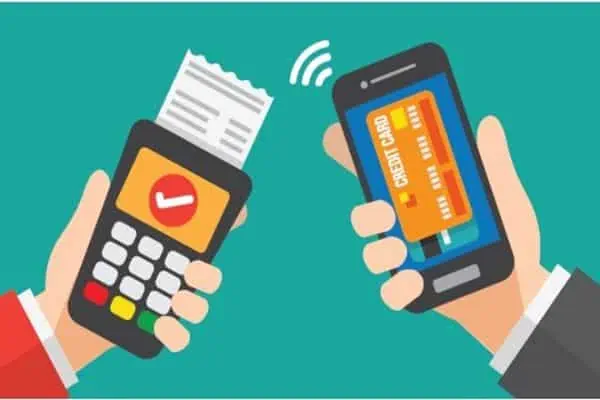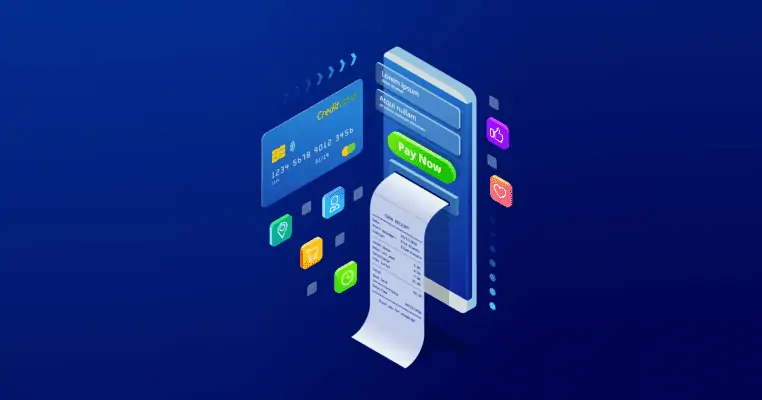
Say goodbye to jingly pockets, wallets stuffed with creased bills, and checkbooks. Payments are trending away from cash and paper checks. A Federal Reserve study shows that the number of payments made by automated clearing house (ACH) transfers exceeded check payments in 2018. That’s the first time that’s ever happened.
Businesses that don’t accept electronic payments run the danger of losing clients and falling behind as digital payments become more and more common. But what information concerning electronic payments do you need to know?
Your queries, including what these payments are and how to take them, are all answered in this tutorial.
What are electronic payments?
When a customer makes an electronic payment for a good or service rather than physically exchanging cash or a paper check, they are doing so. Electronic prices are rampant among e-commerce merchants who conduct business online and require that clients make payments online.
However, businesses also accept debit or credit cards in person for electronic payments.
Types of electronic payments
Let’s look at electronic payments a little more broadly. Typically, these payments fall into one of two categories:
- One-time payments: As the name suggests, this is a single payment that is made only once. A customer making a one-time electronic payment would be using a credit card to buy a cake from a bakery.
- Recurring payments: A customer payment may be automatically processed on a predetermined date if it is made electronically on a repeating schedule. Consider the scenario when you provide clients with monthly website maintenance. Therefore, you might take a predetermined payment out of their bank account on the final working day of every month.
Now that you understand the different payment frequencies, let’s dig into the other electronic payment methods. There are three common types.
Credit cards and debit cards
The most popular electronic payment options are debit and credit cards. Credit cards account for 23% of all payments, while debit cards make up 28% of all charges.
To make these payments, either the actual card is processed at a point of sale (POS) system or the payment information is manually entered during the checkout process.
The business owner must pay a debit or credit card processing fee. The fees applied to each transaction range from 1.5 percent to 3.5 percent. However, compared to other electronic payment options, credit, and debit card payments often clear into your bank account more quickly.
eChecks
A customer paying using an eCheck is similar to a traditional paper check.
The distinction?
They enter their bank account details—primarily their routing and account numbers—into a website rather than filling out that sheet of paper. This is also frequently referred to as a “direct debit” because the money is then taken directly out of their bank account to pay for the transaction.
You probably won’t get the money right away, so be aware that banks sometimes take several days to process and clear this type of payment.
ACH transfers
Another popular type of electronic payment is ACH or automated clearing house. In reality, in 2019, We executed more than 24 billion ACH transactions.
In an ACH transfer, funds are immediately transferred between bank accounts via a centralized system (called the ACH network). For instance, direct deposit is a type of ACH transfer because it involves money traveling straight from your business account to your employees’ accounts.
Although there is a fee associated with processing ACH payments, it is often less expensive than processing fees for credit or debit cards. These fees may be charged as a batch fee, flat fee per transaction, percentage fee, or monthly fee. The percentage typically ranges from 0.5 to 1.5 percent.
Benefits of electronic payments

The world of payments is progressively going cashless, and according to a survey of Americans, 58 percent of respondents believe the nation should go to an entirely cashless economy.
Yet why? Electronic payments, however, have a variety of benefits for both consumers and businesses.
- Enhanced comfort and effectiveness
For the customer, electronic payments are quick and straightforward. That’s crucial because customers are asking for more convenience.
You may also use electronic payments more quickly from a business perspective. These payments are directly transferred to your POS software, streamlining your bookkeeping and eliminating many manual entries.
- Increased sales
You’ll have to pay processing costs when accepting electronic payments, which can be intimidating. Offering these numerous payment options can benefit your company’s bottom line even with the additional cost.
Many experts contend that consumers are more willing to spend money when using a credit card instead of cash. By dividing participants into two groups, two MIT professors explored this hypothesis in a classic study.
One group had to pay cash for basketball tickets, while the other had to use a credit card. Prepared the group purchasing tickets using a credit card to pay twice as much as those purchasing tickets with cash.
- Improved customer relationships
Customers now more than ever desire options. That holds for payment options and brands, products, and services decisions.
By forcing clients to utilize a specific payment method, you risk alienating them and ruining their buying experience. Will abandon a purchase by 42% of American customers if their preferred payment method is not accepted.
Giving consumers the variety they want by accepting electronic payments increases your chances of closing more purchases. Whichever of the aforementioned electronic payment options your consumer chooses to use, they all operate similarly.
Electronic funds transfers are used to process electronic payments (EFT). It is what it sounds like: money is electronically moved from one account to another.
What distinguishes that from an ACH transfer? An ACH transfer is a sort of EFT, after all. ACH transfers, debit or credit card payments, eCheck purchases, and wire transfers are all included in the broader category of EFTs.
The main takeaway is that funds are transferred electronically from bank account A to bank account B. But depending on the electronic payment method, there are many participants and moving elements in this process.
You should be aware of the following terms related to payment processing:
- Payment gateway: Consider it the intermediary between the point of sale and the bank. The payment gateway transmits encrypted payment data between the merchant account and the payment processor.
- Payment processor: This gathers payment information from the payment gateway, examines it, and decides whether to accept or deny the payment. A payment processor and gateway are frequently combined in one payment system.
- Merchant account: To accept credit card payments, you must have a merchant account. When a consumer uses a credit card to pay, the funds are sent to your merchant account and processed by a third party. The money then transfers from the merchant account to your regular business bank account once it has been processed.
Now that you know who’s involved in the process let’s give a quick overview of how this works. Imagine that you have an e-commerce site where customers can order your handmade candles:
- A consumer orders a variety pack of your scented candles from your website using their credit card information.
- The payment gateway receives their payment details. To securely send the customer’s credit card information to the payment processor, the payment gateway encrypts it.
- The payment processor looks over those specifics to ensure everything is correct before approving the transaction.
- When a payment is accepted, the payment processor notifies the payment gateway.
- You fulfill the customer’s candle order after sending them a confirmation page or “success” message.
- Despite what can seem like a lot of information being passed back and forth, the whole payment process is completed in a matter of seconds.
How to accept electronic payments

You want to accept electronic payments. Now what? Getting up and running is relatively simple. You’ll need to do the following:
- Open a merchant account: No matter what payment gateway or processor you choose, you must do this to take card payments. Start by discussing your possibilities for a merchant account with your present bank. Ask your bank about receiving ACH payments at the same time and find out if there are any fees involved.
- Invest in the right tools: A payment processor and gateway are required. Remember that many platforms incorporate both tools into a straightforward solution, like QuickBooks Payments.
- Make electronic payments available at checkout: Allow clients to pay once you’ve set up those essential components.
Depending on the nature of your enterprise, this could entail: integrating a card reader into your POS system to enable in-person acceptance of electronic payments.
Using an invoicing solution that allows you to enable numerous electronic payment methods so consumers can pay an invoice using the manner that works best for them. Creating an online storefront with the option to accept several types of electronic payments from clients.
Why Your Business Should Think About E-Payments
Businesses in North America send and receive $27 trillion in B2B payments each year, but they also incur an estimated $510 billion in manual accounts payable costs.
The fact that at least 60% of payments are still done with paper checks is one of the leading causes of these excessive prices. Most financial leaders know the need to switch to electronic payment systems, but many are unsure where or how to begin.
For businesses that process over 500 check payments monthly, merely doing so would take up an entire workday. Most firms experienced a reduction in processing time to under two hours after switching to MineralTree or other e-payment platforms.
Each paper check transaction typically costs $5, while a typical e-payment can save processing expenses by as much as 80%.
Electronic payments not only reduce costs but also help to control hazards. Buyers want to manage their working capital and thoroughly comprehend their purchasing correctly.
Vendors are interested in the status of the payment and the anticipated delivery date. Both parties desire the potential visibility to back up any arguments. One way that organizations may move away from the trouble and risk of paper checks is by integrating electronic payment solutions into their accounts payable operations.
Conclusion
Year after year, m-commerce and e-commerce gain importance. Customers grow accustomed to quick, straightforward, and uncomplicated payments.
When any additional work is required, they want convenience and become impatient and easily discouraged. The fact that they view comfort differently is even more significant.
Credit cards are a popular option for some, while others opt for specialized or regional payment methods. Implementing multiple e-payment systems is, therefore, an absolute necessity. Either in physical stores or online.
By offering your clients the e-payment solutions they anticipate, you may increase your sales and live up to their expectations.
Private Agent for Dropshipping Success